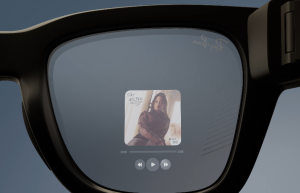The U.S. military continues to develop drones of all sizes, the latest one being small enough to fit in your hand.
The scientists behind the new unmanned aerial vehicle (UAV), called the "Cicada" or Covert Autonomous Disposable Aircraft, explained that the machine can fly like a bird and can be dropped from aircraft, balloons, and even larger drones during missions, according to RT.
The Cicada, which gets its name from the insect, went on its first test flight in 2011 near the city of Yuma, Ariz., in which it was released from 57,600 feet, flew 11 miles and landed within 15 feet of its target.
"The idea was why can't we make UAVs that have the same sort of profile," said Aaron Kahn, a flight controls engineer from the Naval Research Laboratory. "We will put so many out there, it will be impossible for the enemy to pick them up."
The Cicada is only made up of 10 parts and looks like a paper airplane with a circuit board, Business Insider reported. The drone can fly at about 46 miles per hour, and its lack of an engine or propulsion system makes it virtually quiet while on missions
Kahn said it only cost only $1,000 to build the prototype, and that the price could go down as low as $250.
"It looks like a bird flying down," said Daniel Edwards, an aerospace engineer at the Naval Research Laboratory, adding that "it's very difficult to see."
The drone's creators gave it sensors for sending back weather readings for temperature, humidity and air pressure, and researchers believe the machine can use a variety of light-weight sensors and microphones on missions, Business Insider reported.
"They are robotic carrier pigeons. You tell them where to go, and they will go there," Edwards said.
He added that the micro-planes are strong enough to fly through trees withstand gravel and sand, though they still have a tough time dealing with desert shrubbery, RT reported.
The scientists believe the Cicada can be useful on a variety of missions, such as picking up enemy submarines, eavesdropping on troops, forecasting weather and monitoring traffic.
"You equip these with a microphone or a seismic detector, drop them on that road, and it will tell you 'I heard a truck or a car travel along that road.' You know how fast and which direction they're traveling," Kahn said.
The mini-drone is already attracting attention from almost every branch of government and even some intelligence agencies.
"Everyone is interested. Everyone," Edwards said.
© 2025 HNGN, All rights reserved. Do not reproduce without permission.








